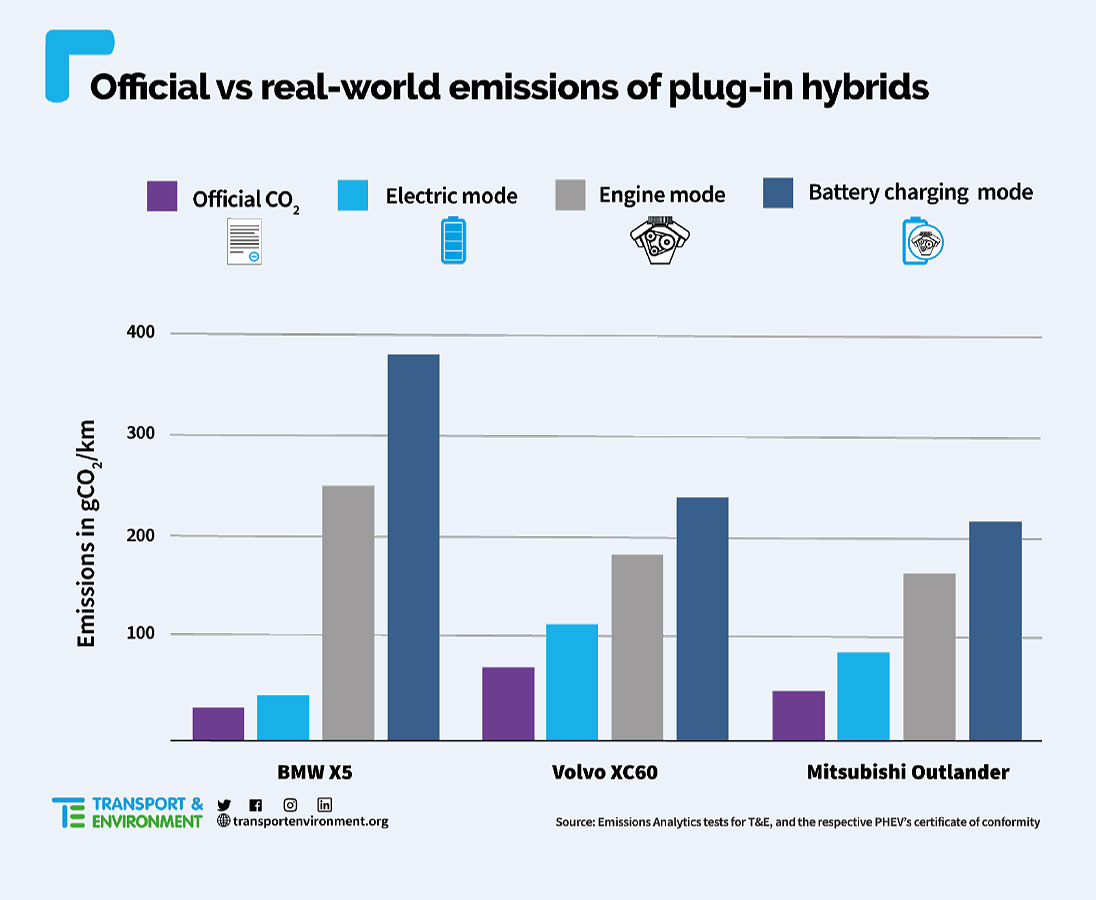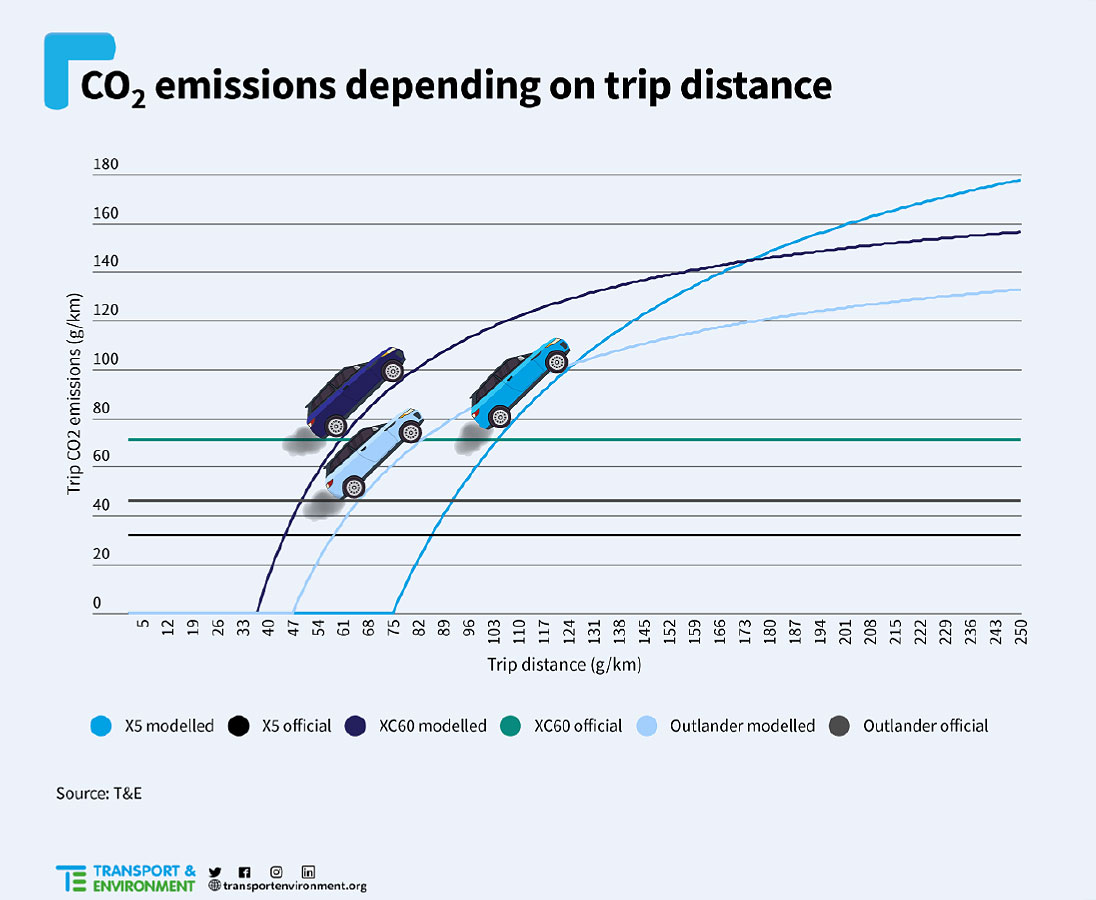Furthermore, the report by the European Federation for Transport and Environment (EFTE) finds that private and fleet buyers are entitled to claim subsidies and benefits under national climate change initiatives but the vehicles are unable to meet the requirements.
It believes vehicle manufacturers should increase the minimal EV-only range of PHEVs to a more reasonable distance, and that owners must adhere to plugging in the cars daily to charge the battery to ensure the maximum CO2-free range.
EFTE said that PHEV sales “are skyrocketing” in Europe with half a million expected to be sold this year.
The reason is that OEMs need to sell low-emission vehicles to comply with the 2020/21 EU car CO2 standard which took effect in January 2020. But EFTE queries if these cars are as low emission in the real world as they are in test labs “or are PHEVs high-emitting vehicles that carmakers sell as a compliance trick to meet the CO2 targets?”.
It commissioned UK-based independent testing laboratory Emissions Analytics to test three of the most popular PHEVs sold in 2019: a BMW X5 (which was the longest EV range PHEV available), a Volvo XC60 and the Mitsubishi Outlander.
The test found that even in optimal test conditions, PHEV emissions are 28-89 per cent higher than advertised. Many PHEVs on sale claim CO2 emission levels of a third, or less of an equivalent conventional combustion-engined car.
“However, none of the PHEVs tested achieve such low figures in the real world even when tested on the mildest of the tests and starting with a fully-charged battery,” EFTE said of the test results.
“Of the three PHEVs tested, the best performer on this test was the BMW X5 but it still exceeded official CO2 values by 28 per cent, emitting 41g/km.
“On the same mild test, the XC60 and Outlander emitted 115g/km and 86g/km respectively, a gap of 62 per cent to 89 per cent compared with official WLTP values.”
EFTE also queried the “significant tax incentives” received by PHEV buyers in several markets.
The European Union allows “super credits” for vehicles with an emission level of 50 grams of CO2 per kilometer (gCO2/km) and lower in WLTP terms.
“Based on our findings, this translates into a real-world level of 100–200 gCO2/km tailpipe emissions of PHEVs, which is above the 2020-21 CO2 target and significantly higher than the 2025 and 2030 benchmarks,” it said.
The Mitsubishi Outlander PHEV, for example, is listed under the WLTP as emitting 47 gCO2/km, hence gets super credits and depending on the individual country in which it is sold, tax relief and other benefits and subsidies.
In the real world, however, EFTE and its testing showed that the Outlander produced 87 gCO2/km on a 100km test route – almost twice its official average.
In Germany, because the Outlander PHEV is a low-emission vehicle its buyer gets a benefit of almost €3500 ($A5511) by choosing that car over, say, an Outlander with a diesel engine.
The PHEV gets a subsidy of €1500 ($A2362) on the purchase and pays €48 ($A76) a year in road tax, while the diesel owner has no purchase incentive and pays €280 ($A441) a year in road tax.
The EFTE said than on the basis of testing that shows PHEVs do not produce the low emission levels as promised, the European governments should lower the CO2 emission threshold “or the qualification of a specific PHEV model should be demonstrated by using real-world usage data, for example collected from on-board fuel consumption meters”.
“Similarly, the threshold for providing Zero- and Low Emission Vehicle (ZLEV) credits should be adapted to real-world data and the current multiplier of 0.7 should be removed to avoid any incentive for PHEVs with a low electric range.
“In parallel, the testing procedures for PHEVs, and in particular the assumptions of the WLTP, should be updated to better reflect real driving and usage patterns.
“At the national level, fiscal and other incentives should prefer PHEVs with a high all-electric range and a high ratio of electric motor power to combustion engine power.”
By Neil Dowling














 Read More: Related articles
Read More: Related articles

